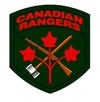NASA


Project Summary
In April of 2008 a team of scientists and Canadian Rangers traversed the northern coast of Ellesmere Island to study the state of the ice shelves and associated ecosystems in this remote region. The Canadian high Arctic is undergoing substantial climate-related changes; ice shelves along Ellesmere’s northern coast that have been attached to the shore for thousands of years, some over 30 meters thick, and thousands of square kilometers of land-fast sea-ice have been breaking-up. The loss of these dominant features has dramatically changed the coastal landscape, leading to the drainage of massive volumes of freshwater from fiords previously dammed by the ice shelves and the creation of vast ice islands. These physical changes are altering the habitat of aquatic microbial communities existing below the ice that play a significant role in the Arctic ecosystem. However, it is not clear how these ecosystems will adapt to current and projected climate change as this region is difficult to access and has not been well studied. This project, an unprecedented collaboration between polar scientists and the Canadian Rangers, aimed to tackle this challenge.
As part of the International Polar Year (IPY) this research program provided a comprehensive survey of the current characteristics and stability of the northern Ellesmere Island ice shelves, multiyear landfast sea ice, and aquatic microbial ecosystems. The science team traveled by snowmobile for two weeks with the Canadian Rangers during their annual sovereignty patrol, Operation Nunalivut 2008. The Rangers are highly skilled reservists with Joint Task Force North (JTFN), the Arctic division of the Department of National Defence (DND), and with their knowledge and expertise of travel in the harsh conditions of the North the team was able to sample previously unstudied regions.
The Northern Ellesmere Ice Shelves, Ecosystems and Climate Impacts science expedition is a contribution to Canadian IPY projects “Variability and Change in the Canadian Cryosphere” and “Microbiological and Ecological Responses to Global Environmental Change in the Polar Regions (MERGE-Canada)”. This collaboration represents an unprecedented synergy between Department of National Defence, Northerners, university researchers, Canadian government departments and the international science community.



© 2008 Ellesmere Ice Shelves
MODIS satellite image of Northern Ellesmere Island August 2005. Courtesy of NASA











Map of Ellesmere Island ice shelves at the end of August 2008. Ice shelves are outlined in black. Left to Right: Serson, Petersen, Milne and Ward Hunt. Quttinirpaaq National Park outlined in green. August 29, 2008 MODIS image from the Rapid Response Project at NASA/GSFC. Map courtesy of Derek Mueller, Trent University.